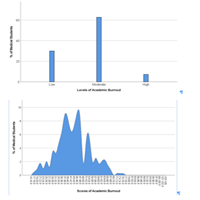Burnout among Iranian medical students: Prevalence and its relationship to personality dimensions and physical activity

Accepted: 17 November 2020
HTML: 8
All claims expressed in this article are solely those of the authors and do not necessarily represent those of their affiliated organizations, or those of the publisher, the editors and the reviewers. Any product that may be evaluated in this article or claim that may be made by its manufacturer is not guaranteed or endorsed by the publisher.
Authors
Several studies have shown the association between personality traits and academic burnout. But the main goal of the present study was to find out an experimental answer to the following questions: Is there a simple relationship between personality dimensions and academic burnout? Can physical activity affect this relationship?. In this cross-sectional correlational study, 417 medical students were selected from three major cities of Iran through stratified multistage sampling and assessed by demographic information form, Baecke Physical Activity Questionnaire, Temperament and Character Inventory, and Breso’s Academic Burnout Questionnaire. Bivariate Pearson correlations and hierarchical linear regression were used to examine the relationships between academic burnout, personality traits, and physical activity. In this study, 400 medical students (39% male and 61% female) filled the questionnaires correctly. The total prevalence of academic burnout was 25.5% (n=102), with heterogeneous levels. Regression analysis indicated that in a multivariate model, being male (β=0.08, p=0.013), higher years of medical school (β=0.18, p˂0.001), and lower scores in novelty seeking (β=-0.53, p=0.006), cooperativeness (β=-0.55, p=0.010), and physical activity (β=-1.22, p˂0.001) could be attributed to higher scores of academic burnout. Furthermore, physical activity had a moderating role in “novelty seeking-academic burnout” (β=-0.47, p=0.044) and “cooperativeness-academic burnout” (β=-0.89, p=0.001) relationships (ΔR2=0.02, p˂0.001). The results suggested that male gender, higher years of medical school, and lower levels of novelty seeking, cooperativeness, and physical activity are associated with higher levels of academic burnout among Iranian medical students. Therefore, paying attention to male gender and individual difference factors, as well as planning for physical education classes during the medicine courses (especially in the last years of medical school), seems essential. However, more extensive investigations need to be carried out in this field through longitudinal studies.
How to Cite
PAGEPress has chosen to apply the Creative Commons Attribution NonCommercial 4.0 International License (CC BY-NC 4.0) to all manuscripts to be published.

 https://doi.org/10.4081/ejtm.2021.9411
https://doi.org/10.4081/ejtm.2021.9411



